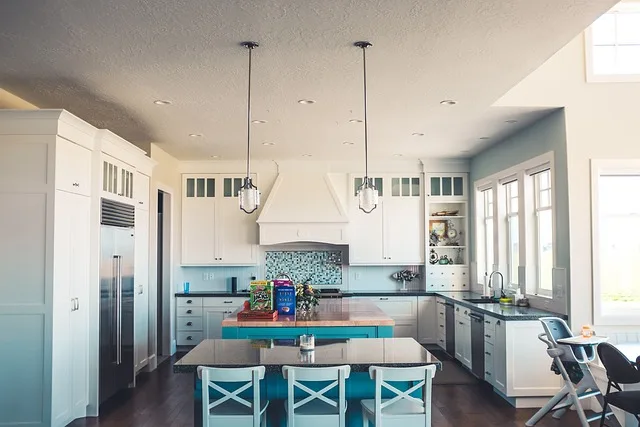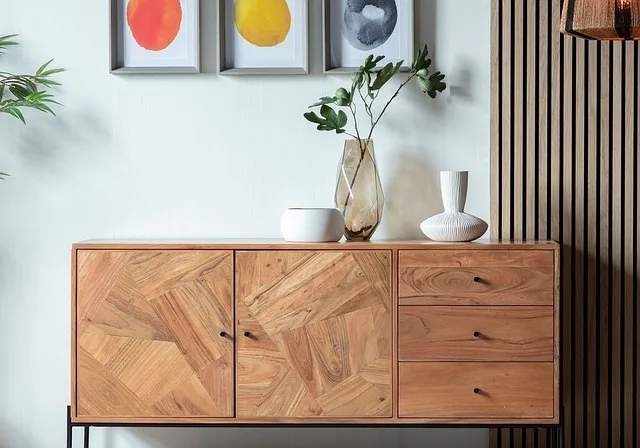First, gather your supplies. You’ll need a paint stripper, some old rags, a putty knife, and safety gear like gloves and goggles. Think of the paint stripper as your magic potion—it’s going to help dissolve that old paint like butter on a hot skillet. Apply it generously to the cabinet surface, following the manufacturer’s instructions. You’ll want to let it sit for a bit, giving it time to work its magic.
Once the paint starts bubbling up, grab your putty knife and gently scrape away the softened paint. It’s like peeling an orange; you want to be careful not to damage the fruit underneath. If you encounter stubborn spots, don’t hesitate to reapply the stripper and give it another go.
After you’ve stripped away the old paint, it’s time for a good clean-up. Use a rag dampened with mineral spirits to wipe down the cabinets, removing any residue left behind. This step is crucial because it prepares the surface for whatever you plan to do next—be it painting, staining, or simply enjoying the natural wood grain.
And remember, patience is key! Just like a fine wine, good things take time. So, take a deep breath, put on your favorite playlist, and enjoy the process of transforming your kitchen cabinets into something fresh and fabulous. Who knew a little elbow grease could lead to such a rewarding outcome?
Revive Your Kitchen: Expert Tips for Stripping Paint from Cabinets Like a Pro
First things first, gather your supplies. You’ll need a good paint stripper, some scrapers, and protective gear. Think of the paint stripper as your kitchen’s superhero, ready to swoop in and save the day. Apply it generously, and let it work its magic. You’ll see the old paint start to bubble and lift away, almost like watching a caterpillar emerge from its cocoon.
Now, here’s where the fun begins! Grab your scraper and gently peel away the softened paint. It’s like peeling a sun-kissed orange—satisfying and rewarding. Just be careful not to gouge the wood beneath. If you hit a stubborn spot, don’t fret! A little extra stripper and patience will do the trick.
Once you’ve stripped away the old paint, it’s time to clean up. Use a damp cloth to wipe down the cabinets, removing any residue. This step is crucial; think of it as giving your cabinets a refreshing shower after a long day.
Finally, consider your next move. Will you repaint, stain, or leave them natural? The choice is yours! Just remember, a little creativity can go a long way in reviving your kitchen. So roll up your sleeves, put on some music, and get ready to transform your space into a culinary haven!
From Drab to Fab: The Ultimate Guide to Stripping Paint from Kitchen Cabinets
First things first, let’s talk about the tools you’ll need. Think of this as your DIY toolkit for success. You’ll want a good paint stripper, some scrapers, and protective gear—gloves and goggles are a must! Just like a knight gearing up for battle, you need to be prepared for the task ahead.
Now, onto the fun part: the actual stripping! Start by removing the cabinet doors and hardware. It’s like taking off a heavy coat before diving into a pool; it makes everything easier. Apply the paint stripper generously, and let it work its magic. You’ll see the old paint bubble up, almost like it’s saying goodbye.
Once the paint is softened, grab your scraper and gently remove it. It’s a bit like peeling a banana—just be careful not to damage the underlying wood. If you hit any stubborn spots, don’t sweat it! A little extra stripper and some patience will do the trick.
After you’ve stripped away the old paint, give your cabinets a good wash to remove any residue. This is like giving them a refreshing shower before their big reveal. Once they’re clean and dry, you can decide whether to stain or repaint them. The world is your oyster!
So, are you ready to turn those drab cabinets into fab ones? With a little effort and creativity, your kitchen can become the envy of all your friends!
DIY Delight: Step-by-Step Techniques for Effortlessly Stripping Paint from Cabinets
First things first, gather your supplies. You’ll need a paint stripper, some old rags, a putty knife, and safety gear like gloves and goggles. Think of the paint stripper as your magic potion—it’s going to do the heavy lifting for you! Apply it generously to the cabinet surface, and let it sit for a few minutes. This is where the magic happens; the paint will start to bubble and lift away, almost like it’s shedding its old skin.
Once the paint is ready to come off, grab your putty knife. Gently scrape away the softened paint, working in the direction of the wood grain. It’s like peeling a sunburn—satisfying and a little bit therapeutic! If you hit any stubborn spots, don’t fret. Just reapply the stripper and give it a little more time to work its wonders.
After you’ve stripped away the old paint, it’s time to clean up. Use your rags to wipe down the cabinets, removing any residue left behind. This step is crucial because it preps the surface for whatever new finish you have in mind. Whether you’re going for a sleek stain or a fresh coat of paint, your cabinets will be ready to shine like new.
So, roll up those sleeves and get ready to unleash your inner DIY enthusiast! With these straightforward techniques, you’ll be amazed at how effortlessly you can strip paint from your cabinets and breathe new life into your space.
Say Goodbye to Old Paint: Transform Your Kitchen Cabinets with These Stripping Secrets
First things first, let’s talk about the tools you’ll need. You don’t need to be a DIY expert to tackle this project. Grab some paint stripper, a putty knife, and a few rags. Think of the paint stripper as your magic potion—it’s going to help you peel away layers of history and reveal the beautiful wood underneath. Just like unwrapping a gift, you’ll be amazed at what you find!
Now, here’s a little secret: patience is key. Apply the stripper generously and let it sit for a while. It’s like letting a fine wine breathe; the longer it sits, the better the results. Once it’s ready, use your putty knife to gently scrape away the old paint. It’s almost therapeutic, like peeling a sunburn—satisfying and oddly rewarding!
Don’t forget to wear gloves and work in a well-ventilated area. Safety first, right? As you strip away the paint, you might discover some imperfections in the wood. Think of these as character marks, adding charm to your cabinets. A little sanding can smooth things out, making your cabinets feel brand new.
Once you’ve stripped and sanded, you can choose to stain or repaint. The world is your oyster! Whether you go for a bold color or a classic finish, your kitchen will transform into a space that reflects your style. So roll up your sleeves and get ready to unveil the beauty hiding beneath that old paint!
Eco-Friendly Paint Stripping: Sustainable Methods for Refreshing Your Kitchen Cabinets
Imagine your kitchen as the heart of your home, where family gathers and memories are made. Now, picture those cabinets, once vibrant, now dulled by layers of paint. Instead of reaching for harsh chemicals that can make you feel like you’re in a science experiment gone wrong, why not opt for sustainable alternatives?
One fantastic method is using natural solvents like vinegar or baking soda. These household staples are not just for cooking; they can work wonders on stubborn paint. Mix some baking soda with water to create a paste, apply it to the paint, and watch as it softens, making it easier to scrape away. It’s like giving your cabinets a gentle spa treatment!
Another option is to try heat. A heat gun can be your best friend here. It softens the paint, allowing you to peel it off effortlessly. Just think of it as giving your cabinets a warm hug, melting away the old layers to reveal the beauty underneath.
And let’s not forget about biodegradable paint strippers. These products are designed to be tough on paint but gentle on the planet. They’re like the superheroes of the paint-stripping world, swooping in to save the day without leaving a toxic trail behind.
Unlock the Beauty Beneath: How to Strip Paint from Kitchen Cabinets Without Damage

First off, think of your cabinets as a canvas waiting to be revealed. Start with a gentle approach. Grab a heat gun or a hairdryer—yes, that’s right! Applying heat can soften the paint, making it easier to scrape off. Just like melting butter on warm toast, the paint will start to lift, allowing you to gently peel it away with a putty knife. Remember to keep the heat moving to avoid scorching the wood!
If you’re not a fan of heat, consider using a chemical paint stripper. It’s like giving your cabinets a spa day! Look for a biodegradable option to keep things eco-friendly. Apply it generously, let it sit for the recommended time, and watch as the paint bubbles up, ready to be wiped away. Just make sure to wear gloves and work in a well-ventilated area—safety first!
For those who prefer a more natural route, vinegar can be your best friend. This kitchen staple works wonders on paint, especially when heated. It’s like a magic potion that breaks down the paint’s bond with the wood. Soak a cloth in hot vinegar, press it against the paint, and let it work its magic.

With these methods, you can strip paint from your kitchen cabinets without a hitch. Imagine the satisfaction of revealing that beautiful wood grain underneath! Your kitchen will transform into a space that feels fresh and inviting, all while keeping the integrity of your cabinets intact.
Frequently Asked Questions
Can I strip paint from cabinets without damaging the wood?
Yes, it is possible to strip paint from cabinets without damaging the wood by using gentle methods such as heat guns, chemical strippers designed for wood, or sanding techniques. Always test a small area first and follow up with proper sealing or finishing to protect the wood.
What safety precautions should I take when stripping paint?
When stripping paint, ensure proper ventilation by working in an open area or using fans. Wear protective gear, including gloves, goggles, and a mask to avoid inhaling harmful fumes. Keep flammable materials away from the work area and use drop cloths to protect surfaces. Follow the manufacturer’s instructions for the paint stripper and dispose of waste materials safely.
How do I prepare my kitchen cabinets for paint stripping?
To prepare your kitchen cabinets for paint stripping, start by removing all hardware, including knobs and hinges. Clean the surfaces thoroughly to eliminate grease and dirt. Use a screwdriver to take off the cabinet doors and drawers for easier access. If necessary, lightly sand the surfaces to help the stripper adhere better. Finally, ensure the area is well-ventilated and protect surrounding surfaces with drop cloths.
What are the best methods for stripping paint from kitchen cabinets?
To effectively remove paint from kitchen cabinets, consider using methods such as chemical paint strippers, which dissolve paint for easy removal, or heat guns that soften the paint for scraping. Sanding is another option, though it requires careful technique to avoid damaging the wood. Always ensure proper ventilation and safety measures when using chemicals or heat.
How long does it take to strip paint from kitchen cabinets?
The time required to strip paint from kitchen cabinets varies based on the method used and the number of cabinets. Typically, it can take anywhere from a few hours to a couple of days. Factors such as the type of paint, the stripping technique (chemical or heat), and the condition of the cabinets will influence the duration. Proper preparation and technique can help expedite the process.